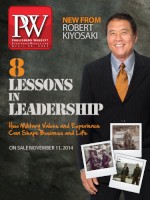As soon as Arthur Frommer bought back his namesake brand from Google a year ago, he and his daughter Pauline, who is now copublisher and a 50% partner in Frommer Media, quickly got to work on the first new line of guide books. “I’ve never worked as hard in my life as I’ve worked the last seven months,” said Frommer, fresh off a 15-city media tour that he took with Pauline. “It was a Herculean task.”
In late October, the publisher released 30 guidebooks, with a total print run of 500,000 copies, distributed by Publishers Group West. Through early March, Frommer sold 220,000 copies from the first list (during, as the publisher pointed out, an especially brutal winter—the low season for travel-guide buying). With the warmer weather, he expects to sell out the remaining copies, and has already gone back to press on two of the most popular guides—those on Paris and New York.
Frommer published his first travel book, Europe on 5 Dollars a Day, in 1957 after he came out of the Army. The book—a version of a guide he wrote for his fellow American GIs abroad—“destroyed” his career as a lawyer (Frommer is a Yale Law School graduate), but an internationally recognized brand was born. Frommer sold the trademark to Simon & Schuster in 1977, and, more recently, the books were published in print by John Wiley & Sons. Google bought Frommer’s from Wiley in August 2012 for $22 million, and ceased to release physical copies of the guides. Now, as he resumes publishing the line he built over the last half-century, Frommer feels as if he’s starting all over again. “I have been doing all the things that a fledgling publisher does,” he remarked.
Frommer’s purchase of the brand did not include any existing inventory, and he and his team are committed to giving each title a fresh look. “All of our books contain new ISBNs, and not a single one has simply been reprinted without substantial, heavy changes from an earlier edition,” Frommer noted.
The company currently consists of five full-timers, working out of their homes, who support over 40 guidebook writers across the globe. Frommer shares publishing duties with his daughter, a travel writer in her own right. She was, in some ways, born for the job—Frommer fondly recalled traveling with a swaddled, four-month-old Pauline in Europe as he researched and wrote his guides, fashioning makeshift cribs from dresser drawers in bed and breakfasts.
The father-daughter team is also keeping an eye on the digital aspect of travel publishing. E-book sales of the guides are “fairly strong,” and Frommer expects all sales to climb “considerably.” He regularly blogs on the company website, and he and Pauline record a nationally syndicated radio show, also available via podcast. Still, with five books published this spring and 41 more coming in the fall, Frommer is focusing on reinstating the print books, and the Frommer’s brand.
The strong sales generated by his first list gives Frommer reason to believe that the “infatuation” with electronic aides, like travel-oriented apps, seems to be waning. “The print travel guide is enjoying a new lease on life,” he said. “I was always certain of that, and that’s why I reacquired the books. There’s a giant audience of tens of millions of people who have used the Frommer’s travel guides over the past 57 years.”



 Volume 261
Issue 17
04/28/2014
Volume 261
Issue 17
04/28/2014

